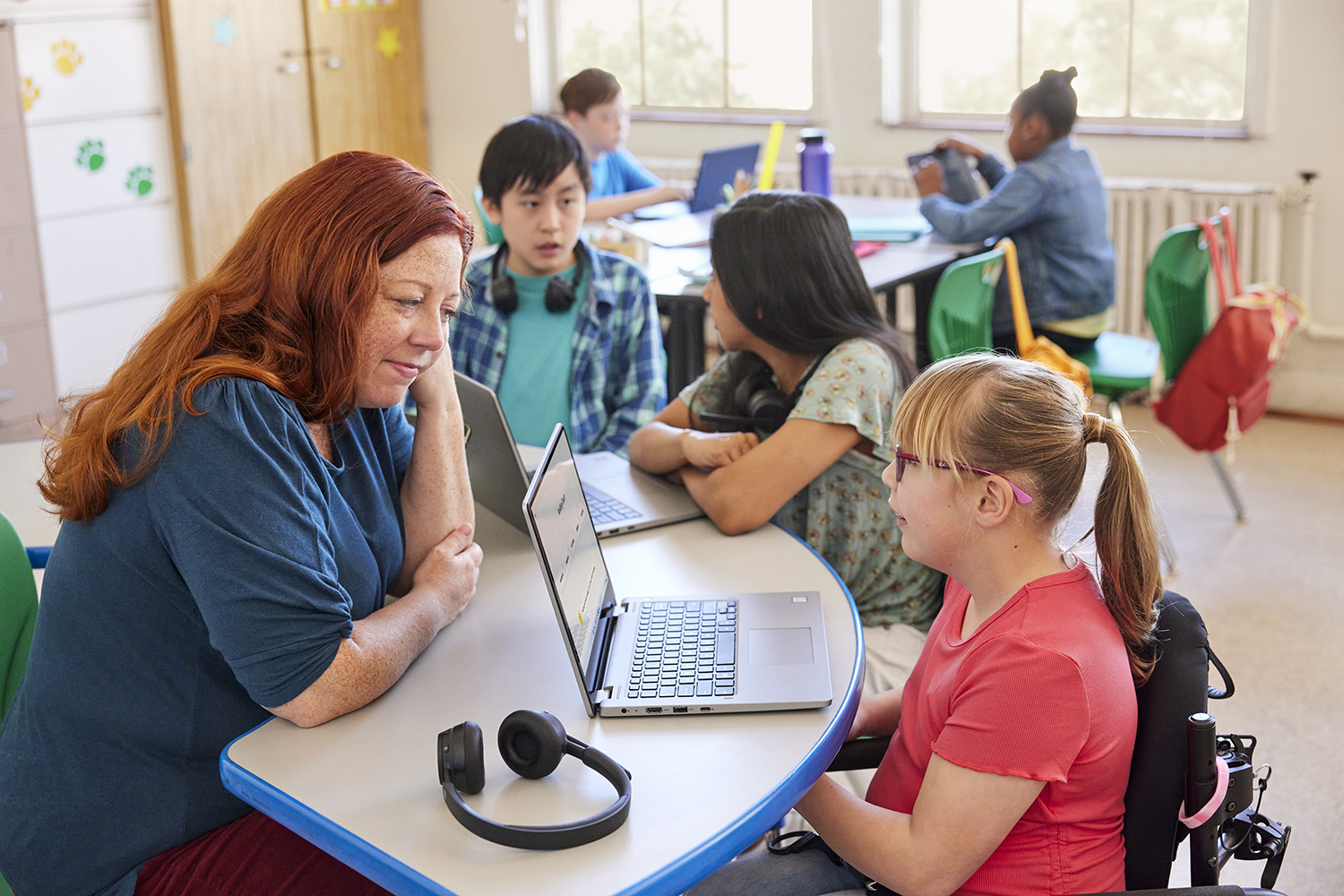As higher education institutions continue to adapt their program offerings and instruction to the changing needs of students, they are also facing the dual challenges of addressing equity issues exacerbated by the pandemic and attracting and engaging learners spanning different lifestyles, life-stages, and learning styles.
In the recently released paper, The 2021-22 Multimodal Learning Framework, which is an Economist Impact report sponsored by Microsoft Education, Dr. Elizabeth J. Stroble, chancellor of Webster University in St. Louis, Missouri, notes: “Student voice and student choice about the ways in which they like to learn have been raised and elevated during pandemic times and that truly will not go away.”
This paper, along with the two others in the series (Bridging the Digital Divide to Engage Students in Higher Education and Flattening the Multimodal Learning Curve: A Faculty Playbook), as well as our resources for higher education page, provides insights from education experts and industry research to help institutions leverage technology to extend classrooms beyond traditional spaces and redefine the higher education experience to one that is more inclusive of learners and their needs for diverse engagement options.
Student voice and student choice about the ways in which they like to learn have been raised and elevated during pandemic times and that truly will not go away.
Dr. Elizabeth J. Stroble, chancellor of Webster University
What is Multimodal Learning?
Multimodal learning (MML) is defined as teaching that gives learners the choice to participate and engage in class activities synchronously and asynchronously—in class, across campus, or offsite based on their learning needs and preferences. This type of teaching shows a great deal of promise for integrating learning with technology-enabled platforms that allow flexible, active learning and more equitable access to education. Courses can be presented in a variety of formats, from lectures offered in-person with live streaming and on-demand options, to group activities that rotate between physical meetups and online sessions that enable equity in higher education.
With online collaborative tools such as Microsoft Teams, students are able to work with each other in real time or asynchronously and engage in team-based learning environments that encompass both remote and in-person instruction. Additionally, inclusive experiences such as digital reading tools can create more adaptive educational environments and help students feel connected to one another and the educational content. And with a suite of learning products such as Teams, Azure, and AI-powered analytics that are designed to work together, instructors can gain insights that help them increase student well-being and maximize engagement.
Ensuring Access for All and Equity in Higher Education
In order to increase access to more students and maximize the positive benefits of multimodal learning, experts advise institutions to understand the demographics of their students, identify the needs of the communities they come from, and create programs and offer resources that ensure access to all. “Equity is not every student getting the same level of intervention, but [ensuring] they’re getting the right level [of intervention] for them to make progress regardless of their background characteristics,” says Michael Horn, author and co-founder of the Clayton Christensen Institute for Disruptive Innovation.
As institutions transition to multimodal teaching, faculty training and support is key to building effective programs. To encourage instructors to adapt, institutions should provide training in how to integrate digital tools with traditional methods, and teaching needs to be prioritized as the core of faculty responsibilities and evaluations. “Institutions that have been successful implementing MML have decided that teaching is a centerpiece of their work,” says Dr. Susan Bowles Therriault, Managing Researcher at the American Institutes for Research.
As higher education institutions evolve their instructional models, work to upskill faculty to capitalize on technology investments, and define flexible and engaging programs of interest to today’s students, they also need to consider the characteristics of the physical and virtual places where learning will occur. Dr. David Conrad Kellermann, senior lecturer at the School of Mechanical and Manufacturing Engineering, University of New South Wales, states: “The next ten years will be more about inventing the digital campus: a place where research, enterprise, collaboration and friendship take place.” The goal of this evolution will be to strike a balance between the creation of inclusive physical spaces that inspire community building, and flexible, accessible digital spaces that encourage and expand collaboration and exploration.
Because multimodal learning benefits from, but does not exclusively rely on, technology, MML can provide the roadmap for institutions to create enticing learning environments. Since hybrid instruction can be designed to be seamless, a course could include mixed activities such as a live-and-online lecture on electronics, asynchronous workgroup collaboration on design plans for a device, or in-person assembly of a physical model. These are only a few of the possibilities—undoubtedly, creative instructors will find many new ways to combine synchronous and asynchronous instruction to immerse students in interactive online and offline learning activities.
When institutions place equity, the student experience, and content at the forefront of learning redesign, and engage analytical tools to personalize learning and drive engagement at scale, multimodal learning in remote and hybrid scenarios can offer students from diverse circumstances access to innovative, flexible experiences that empower them with the knowledge and skills they seek.
Read the 2021-22 Multimodal Learning Framework and visit Microsoft Education’s higher education resource page.










